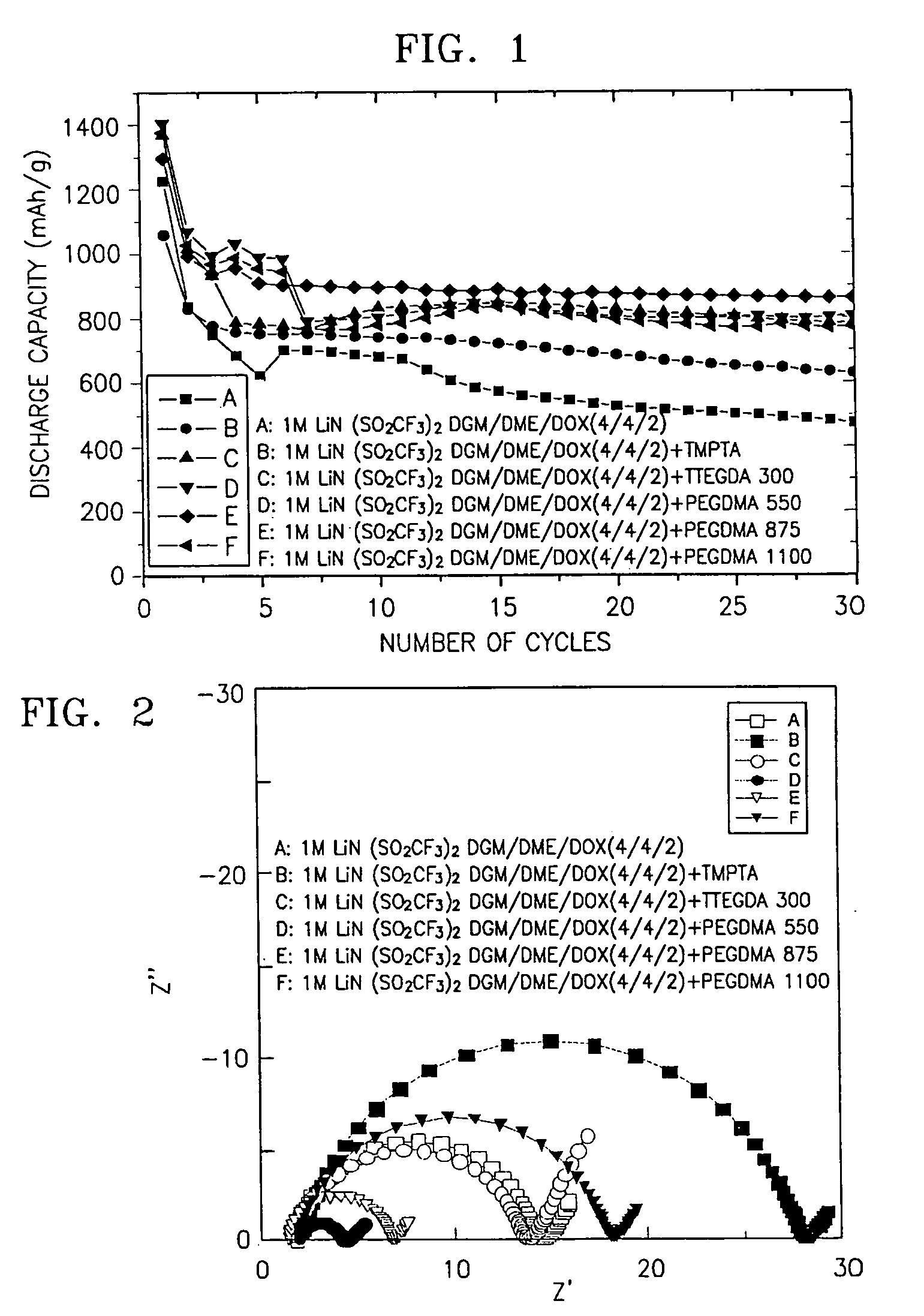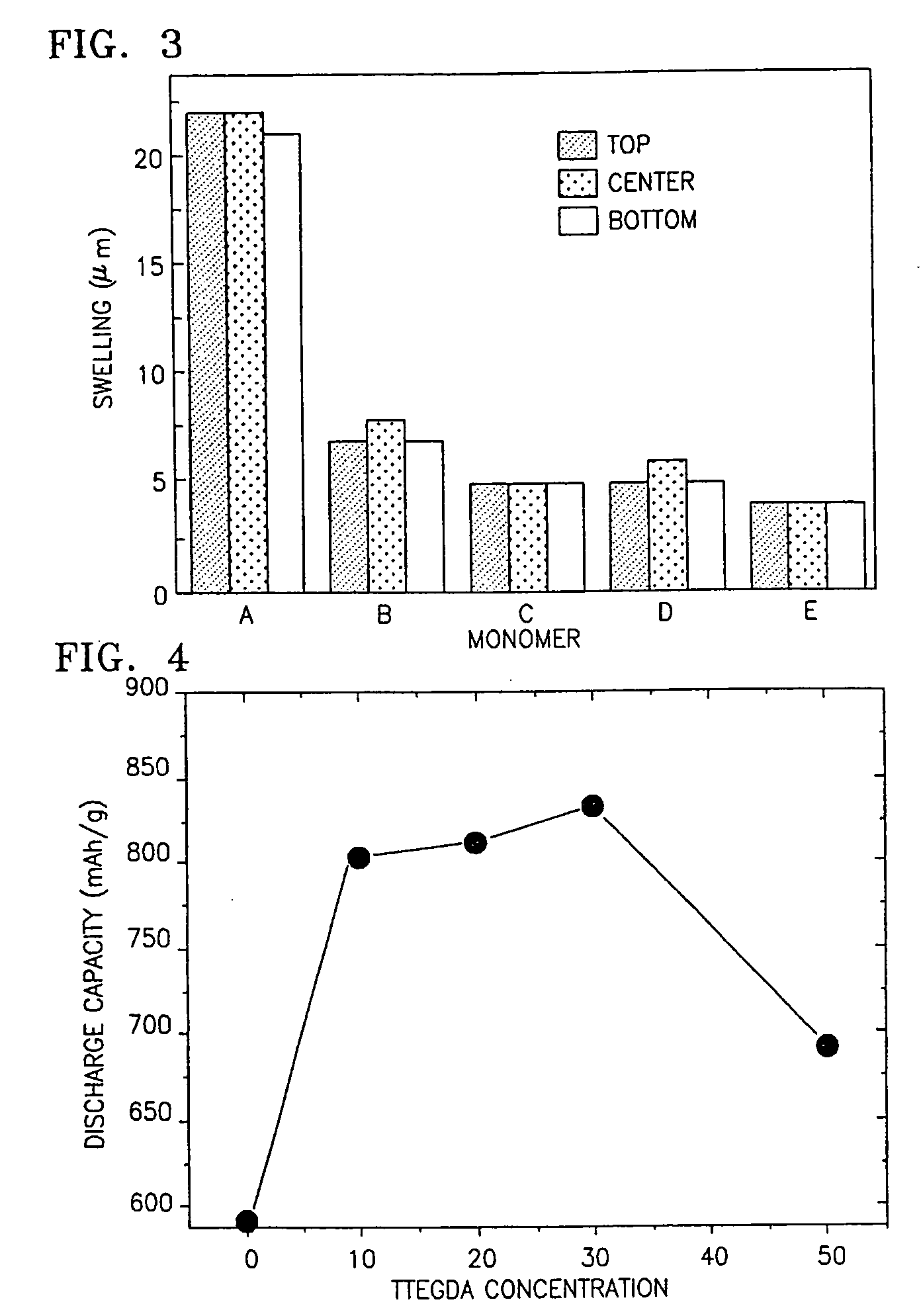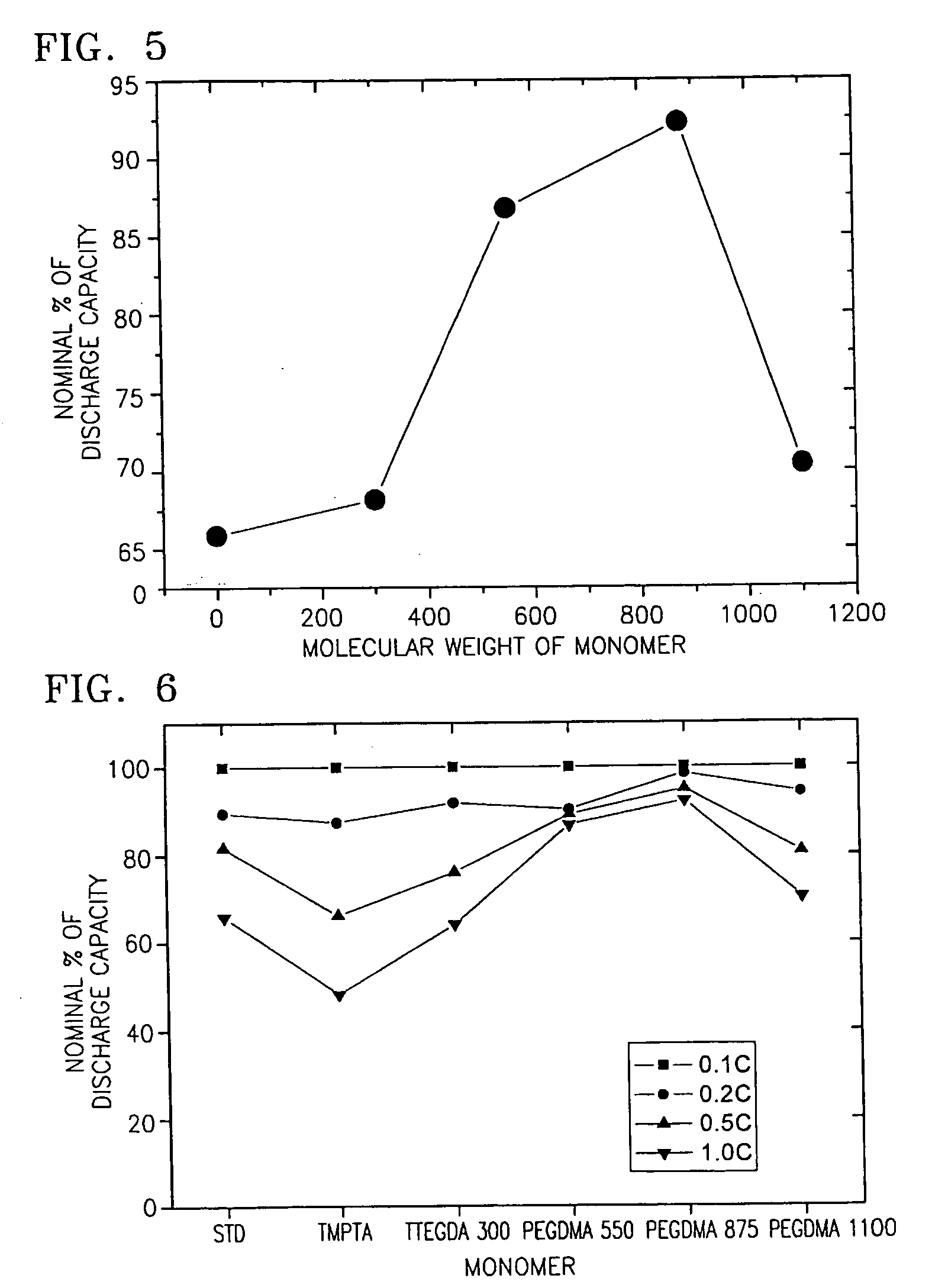Positive electrode having polymer film and lithium-sulfur battery employing the positive electrode
a lithium-sulfur battery and polymer film technology, which is applied in the direction of non-aqueous electrolyte cells, cell components, cell component details, etc., can solve the problems of deteriorating cycle life characteristics, low capacity, and no lithium-sulfur batteries have been commercialized, so as to improve the electrolyte-impregnating ability reduce the swelling of the positive electrode, and increase the degree of positive active material utilization
- Summary
- Abstract
- Description
- Claims
- Application Information
AI Technical Summary
Benefits of technology
Problems solved by technology
Method used
Image
Examples
example 1
Manufacture of Lithium-Sulfur Battery
[0067] 80 wt % of elemental sulfur, 5 wt % of a carbon black conductive material (Super-P), 15 wt % of a styrene butadiene rubber (SBR) (manufactured by Zeon Corp. in the name of BM4003B) having a weight-average molecular eight of 600,000 were dissolved in acetonitrile (20:1 in a weight ratio of solvent to solid content), followed by ball milling at 200 rpm for 6 hours, thereby preparing a homogenized positive active material slurry.
[0068] The positive active material slurry was coated on a carbon-coated Al substrate (Rexam) using a doctor blade to a thickness in which the loading density of the positive electrode becomes about 2 mAh / cm2 assuming that discharge capacity of sulfur is 840 mAh / g, followed by drying at 80° C. for 24 hours.
[0069] 30 g of TTEGDA monomer having a molecular weight of 300 was dissolved in 70 g of nonaqueous electrolyte to give a polymer film composition, and the polymer film composition was coated on a positive electro...
example 2
[0072] A lithium-sulfur battery was fabricated by the same procedure as in Example 1, except that PEGDMA having a molecular weight of 550 was used instead of the TTEGDA monomer having a molecular weight of 300.
example 3
[0073] A lithium-sulfur battery was fabricated by the same procedure as in Example 1, except that PEGDMA having a molecular weight of 875 was used instead of the TTEGDA monomer having a molecular weight of 300.
PUM
| Property | Measurement | Unit |
|---|---|---|
| thickness | aaaaa | aaaaa |
| donor number | aaaaa | aaaaa |
| separation distance | aaaaa | aaaaa |
Abstract
Description
Claims
Application Information
 Login to View More
Login to View More - R&D
- Intellectual Property
- Life Sciences
- Materials
- Tech Scout
- Unparalleled Data Quality
- Higher Quality Content
- 60% Fewer Hallucinations
Browse by: Latest US Patents, China's latest patents, Technical Efficacy Thesaurus, Application Domain, Technology Topic, Popular Technical Reports.
© 2025 PatSnap. All rights reserved.Legal|Privacy policy|Modern Slavery Act Transparency Statement|Sitemap|About US| Contact US: help@patsnap.com



